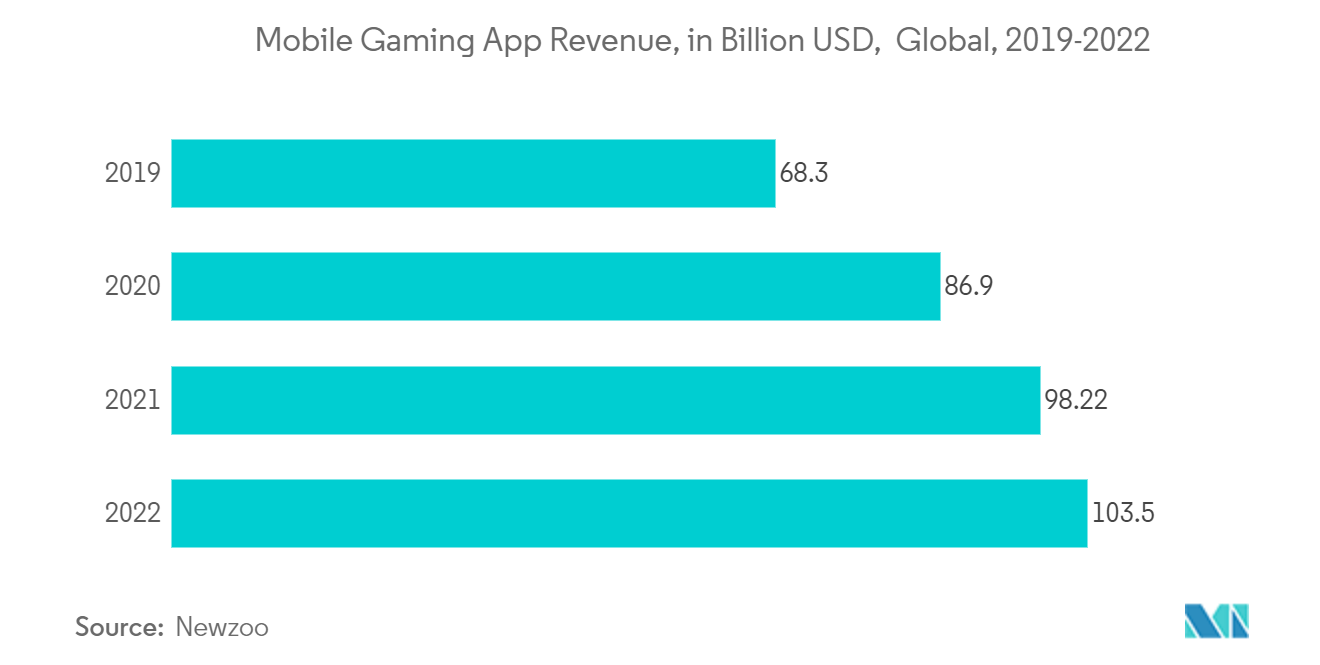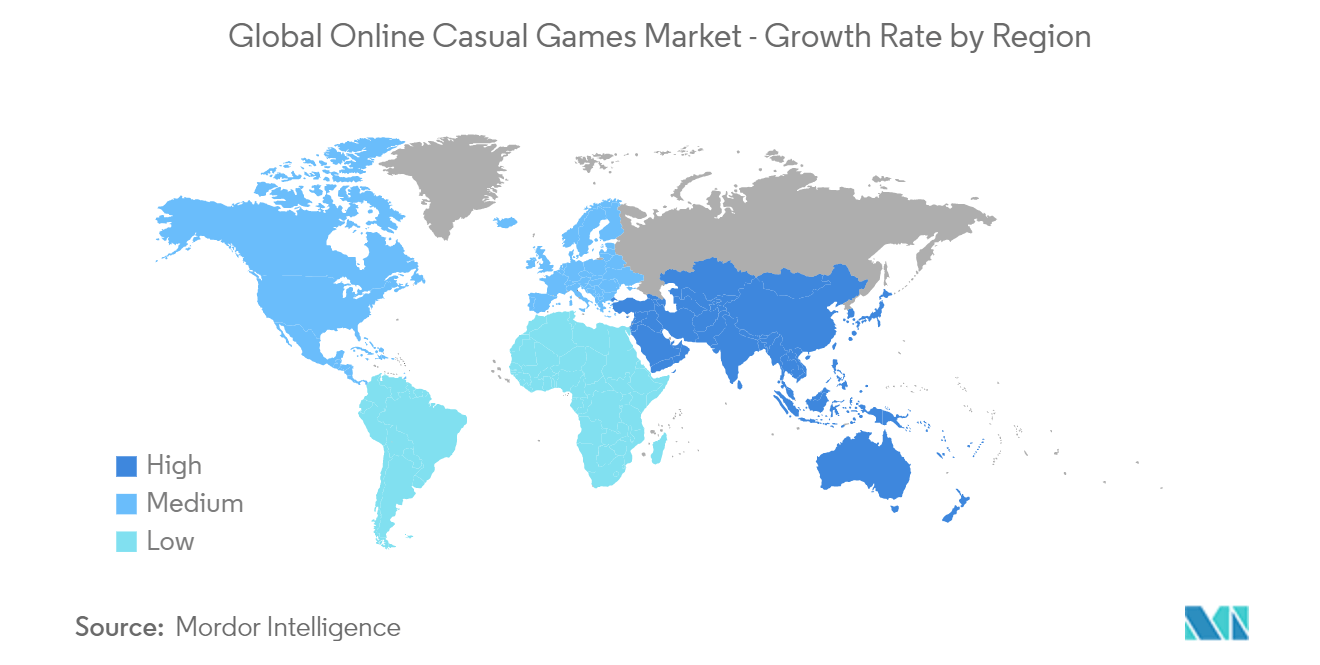Market Trends of Online Casual Games Industry
This section covers the major market trends shaping the Online Casual Games Market according to our research experts:
The Increasing Penetration of Internet and Smartphones Boosted the Demand for the Online Casual Games Market
- The mobile platform, such as smartphone gaming, has surged in the last few years. Last year, there were 228.7 million active mobile game players across the United States and Canada, marking a 4% year-over-year reduction compared to 2020 but a 9% increase over 2019.
- Moreover, according to App Annie, global consumer expenditure on mobile games exceeded USD 116 billion in 2021. As per the firm's recent State of Mobile 2022 study, this marked a 15% year-over-year growth.
- The smartphone gaming platform is rapidly expanding and represents a low-cost potential for investors, mobile developers, and publishers. It is also expected that by 2021, the number of mobile online gamers in Southeast Asia will reach 250 million.
- The release of 5G and unlimited data plans is also expected to be key factors toward the success of cloud gaming globally, as most gamers currently prefer games on mobile devices. The increasing services and investment in 5G infrastructure are also vital to this success. According to Ericsson, the number of 5G mobile subscriptions in the Asia-Pacific region is anticipated to reach around 1,545 million by 2025.
- The market players have been targeting growth opportunities by investing in other parts of the world. For instance, Voodoo invested in Teskin, an Israeli casual game developer, in November 2021, and Teskin will join Voodoo's simple business section. However, both companies will operate independently and work on their respective initiatives. Teskin has accumulated over 20 million lifetime downloads across its portfolio of casual mobile games in just four years. It intends to increase its team size and invest in new casual games.

Asia-Pacific Region Expected to Increase its Market Share
- Asia-Pacific is expected to have a considerable market share in the gaming sector, with China, Japan, and South Korea displaying strong growth potential. With rising technological utilization, China is one of Asia's most important economies. Increasing exports and innovating new games and systems are important gaming drivers. China is one of the Asia-Pacific countries with a significant COVID-related increase in its gaming companies.
- Many significant players are making acquisitions and forming partnerships in Japan to strengthen their regional position. For instance, last year, the Japanese publisher Sega began a strategic agreement with Microsoft to develop the Super Games platform using the Microsoft Azure cloud platform.
- The availability of cheap internet and low-cost smartphones is a major driver of the development of casual games in India. According to the IAMAI research Unpacking a billion dollar industry: Digital games and sports in India, 2021, more than 43% of smartphone users play at least one casual game. India will have over 900 million mobile subscribers by 2023. 94% of India's 420 million casual gamers play on mobile devices.
- China produced USD 89.5 billion in income last year, according to figures from the Mobile Game Index 2nd Edition published by adjoe. The United States is second with USD 58.3 billion, followed by Japan with USD 50 billion. Also, last year, the number of app downloads in China (58.1 billion) was nearly equal to the rest of the globe (59.7 billion).
- According to the Gambling Insider Magzine, India is (arguably) one of the most distinct gaming marketplaces, owing to the wide range of games available and the diverse user base. Sports enthusiasts are interested in fantasy sports, esports is popular among Gen-Z and young adults, and card games (such as poker and rummy) are popular among all age groups. Throughout this, the casual gaming sector in India has grown dramatically in recent years, and it is expected to produce INR 169 billion in revenue by 2025 due to a rising user base and a little boost from the pandemic.


